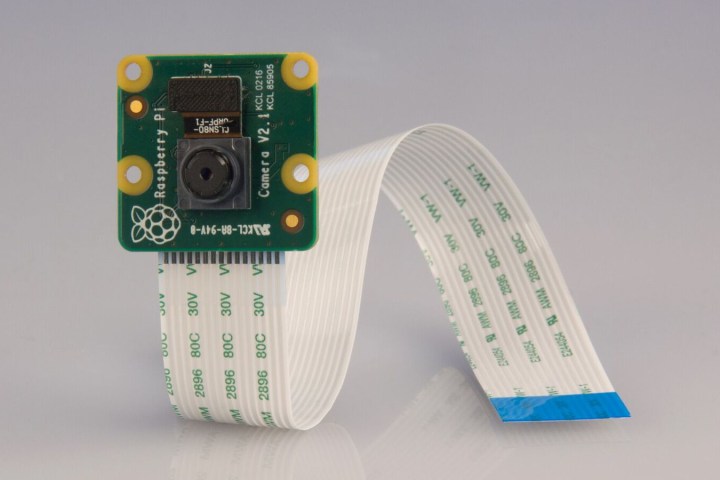
“In our testing, IMX219 has proven to be a fantastic choice,” Upton reports. “You can read all the gory details about IMX219 and the Exmor R back-illuminated sensor architecture on Sony’s website, but suffice to say this is more than just a resolution upgrade: it’s a leap forward in image quality, colour fidelity and low-light performance.”
Related: Someone turned a Game Boy into the ultimate arcade machine using Raspberry Pi
Built for smartphones and tablets, the new camera sensor features a high-speed video imaging function, a Lens Shading Correction function, and support for BME-HDR. According to the company, the sensor is capable of HD video recording at 120 frames per second on a 2MP setting and full field view, and 180 frames per second at a 1,280 x 720 resolution with a 16:9 aspect ratio.
On a technical note, the specifications show that the new sensor has approximately 8.08 million active pixels (3,280 x 2,464). It uses a back-illuminated fabrication process for higher sensitivity, an I2C fast mode plus (1MHz) control communication interface, and a MIPI 4 2-lane output format. Other features include an input clock frequency of 6MHz to 27MHz, a signal processing function within the sensor, and more.
Related: Check out the Raspberry Pi family here
Sony says that BME-HDR is an image-processing technology used for subjects with a high contrast. The tech enables bright and dark areas to be seen at the same time by synthesizing different exposure conditions. Meanwhile, the Lens Shading Correction aspect not only corrects normal lens shading with four independent colors, but also corrects optical “unevenness.”
The new 8MP camera sensor accessory is backed by the Raspberry Pi 3’s VideoCore IV 3D graphics core (Model B). Upton says this core includes a sophisticated image sensor pipeline (ISP) that converts the camera sensor’s raw Bayer-format input images into YUV-format output images. It also corrects artifacts like image distortion and defective pixels.
“Tuning the ISP to work with a particular sensor is a time-consuming, specialist activity: there are only a handful of people with the necessary skills, and we’re very lucky that Naush Patuck, formerly of Broadcom’s imaging team, volunteered to take this on for IMX219,” Upton says in his blog.
The Raspberry Pi 3 was launched in February. It packs a quad-core ARMv8 64-bit processor clocked at 1.2GHz, 1GB of memory, Wireless N and Bluetooth 4.1 connectivity, four USB ports, an HDMI port, an Ethernet port, a microSD card slot, and 40 GPIO pins. There’s also a camera interface, a display interface, and a composite video/audio jack.
The previous 5MP camera module accessory made its debut back in 2013. It was capable of 1080p capture at 30 frames per second and 720p capture at 60 frames per second. On a more technical note, it had an active array size of 2,592 x 1,944 pixels and used a two-lane MIPI interface. The module was used in a number of published Raspberry Pi projects spanning telescopes, kites, and the Naturebytes camera trap.
The new 8MP camera sensor board for the Raspberry Pi is offered in two flavors: visible light and infrared. The $25 modules are now available at RS Components and element14.


